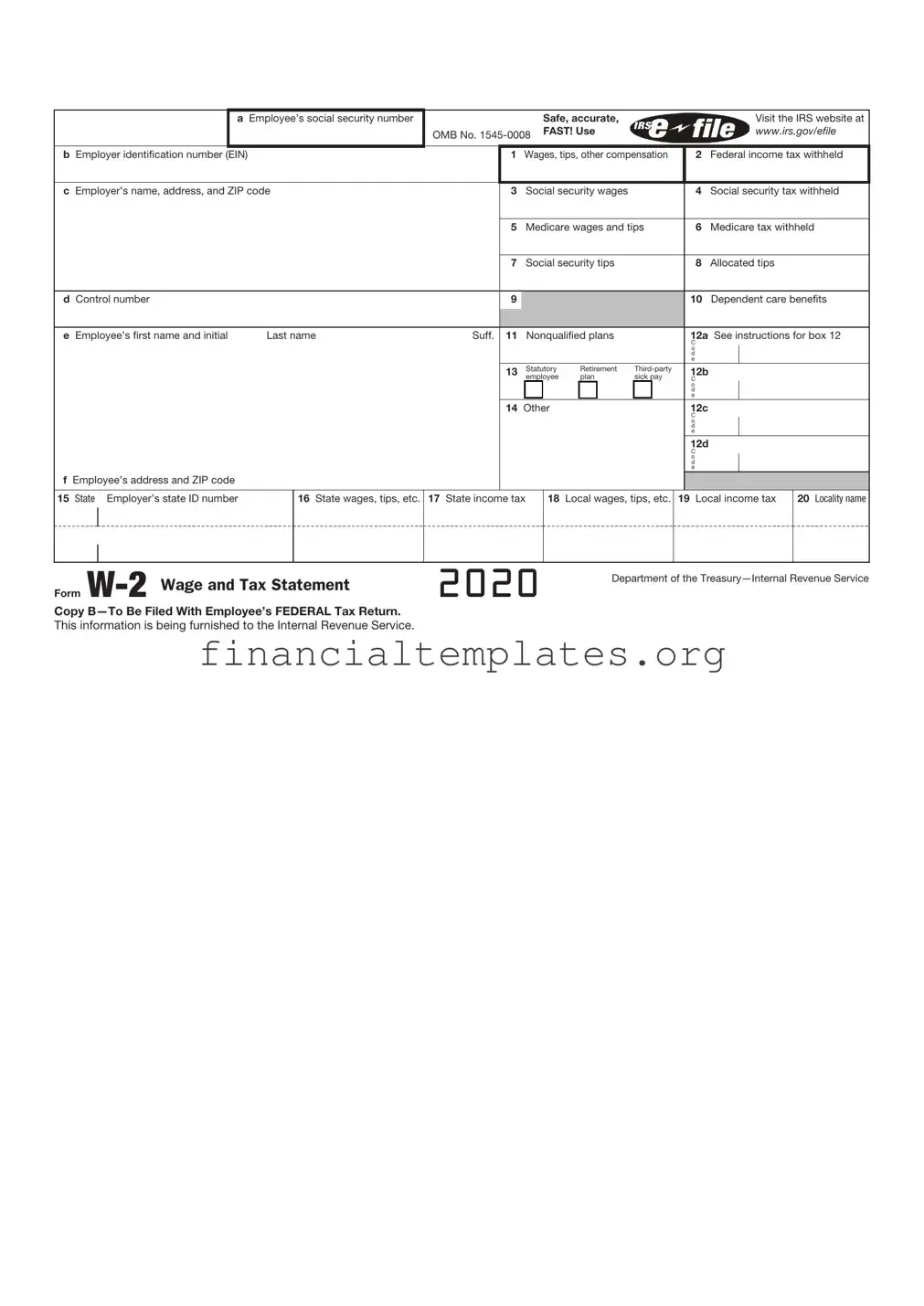Instructions for Employee
(See also Notice to Employee on the back of Copy B.)
Box 1. Enter this amount on the wages line of your tax return.
Box 2. Enter this amount on the federal income tax withheld line of your tax return.
Box 5. You may be required to report this amount on Form 8959, Additional Medicare Tax. See the Instructions for Forms 1040 and 1040-SR to determine if you are required to complete Form 8959.
Box 6. This amount includes the 1.45% Medicare Tax withheld on all Medicare wages and tips shown in box 5, as well as the 0.9% Additional Medicare Tax on any of those Medicare wages and tips above $200,000.
Box 8. This amount is not included in box 1, 3, 5, or 7. For information on how to report tips on your tax return, see the Instructions for Forms 1040 and 1040-SR.
You must file Form 4137, Social Security and Medicare Tax on Unreported Tip Income, with your income tax return to report at least the allocated tip amount unless you can prove with adequate records that you received a smaller amount. If you have records that show the actual amount of tips you received, report that amount even if it is more or less than the allocated tips. Use Form 4137 to figure the social security and Medicare tax owed on tips you didn’t report to your employer. Enter this amount on the wages line of your tax return. By filing Form 4137, your social security tips will be credited to your social security record (used to figure your benefits).
Box 10. This amount includes the total dependent care benefits that your employer paid to you or incurred on your behalf (including amounts from a section 125 (cafeteria) plan). Any amount over $5,000 is also included in box 1. Complete Form 2441, Child and Dependent Care Expenses, to figure any taxable and nontaxable amounts.
Box 11. This amount is (a) reported in box 1 if it is a distribution made to you from a nonqualified deferred compensation or nongovernmental section 457(b) plan, or (b) included in box 3 and/or box 5 if it is a prior year deferral under a nonqualified or section 457(b) plan that became taxable for social security and Medicare taxes this year because there is no longer a substantial risk of forfeiture of your right to the deferred amount. This box shouldn’t be used if you had a deferral and a
distribution in the same calendar year. If you made a deferral and received a distribution in the same calendar year, and you are or will be age 62 by the end of the calendar year, your employer should file Form SSA-131, Employer Report of Special Wage Payments, with the Social Security Administration and give you a copy.
Box 12. The following list explains the codes shown in box 12. You may need this information to complete your tax return. Elective deferrals (codes D, E, F, and S) and designated Roth contributions (codes AA, BB, and EE) under all plans are generally limited to a total of $19,500 ($13,500 if you only have SIMPLE plans; $22,500 for section 403(b) plans if you qualify for the 15-year rule explained in Pub. 571). Deferrals under code G are limited to $19,500. Deferrals under code H are limited to $7,000.
However, if you were at least age 50 in 2021, your employer may have allowed an additional deferral of up to $6,500 ($3,000 for section 401(k)(11) and 408(p) SIMPLE plans). This additional deferral amount is not subject to the overall limit on elective deferrals. For code G, the limit on elective deferrals may be higher for the last 3 years before you reach retirement age. Contact your plan administrator for more information. Amounts in excess of the overall elective deferral limit must be included in income. See the Instructions for Forms 1040 and 1040-SR.
Note: If a year follows code D through H, S, Y, AA, BB, or EE, you made a make-up pension contribution for a prior year(s) when you were in military service. To figure whether you made excess deferrals, consider these amounts for the year shown, not the current year. If no year is shown, the contributions are for the current year.
A—Uncollected social security or RRTA tax on tips. Include this tax on Form 1040 or 1040-SR. See the Instructions for Forms 1040 and 1040-SR.
B—Uncollected Medicare tax on tips. Include this tax on Form 1040 or 1040-SR. See the Instructions for Forms 1040 and 1040-SR.
C—Taxable cost of group-term life insurance over $50,000 (included in boxes 1, 3 (up to the social security wage base), and 5)
D—Elective deferrals to a section 401(k) cash or deferred arrangement. Also includes deferrals under a SIMPLE retirement account that is part of a section 401(k) arrangement.
E—Elective deferrals under a section 403(b) salary reduction agreement
(continued on back of Copy 2)







